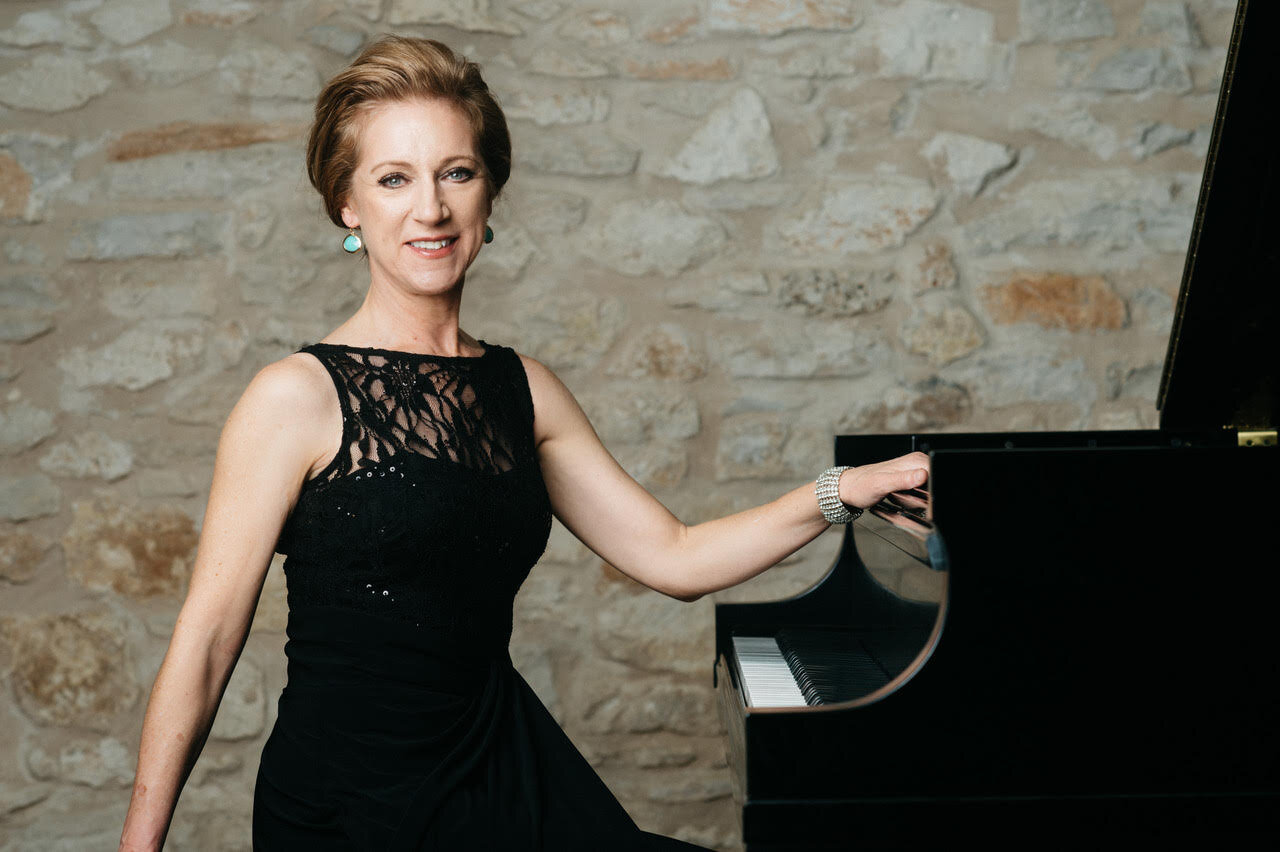May Concert 2025
Sunday MAY 18, 2025 | 4:30 pm
Monday MAY 19, 2025 | 7:00 pm
artists:
Program:
8 Pieces for Violin and Bass, Op. 39………………………………………….....……………….…………….………Reinhold Glière
Reinhold Glière’s 8 Pieces, Op.39 for Violin and Bass was composed in 1909. This set of miniatures is a delightful exploration of contrasting moods, colors, and styles, highlighting the unique interplay between two instruments with very different ranges and timbres. Each piece has its own character, from lyrical to dancelike to romantic to playful, and ending with a virtuosic showcase for both instruments in the final Etude.
Sanctuary for Violin, Cello and Piano…………………………………………………………….….………..…….……Stacy Garrop
Program notes by the composer.
In 2011, Barbara Garrop, my mother, commissioned me to write a piano trio in memory of Norman Garrop, my father, who had passed away about thirty years prior. When I started brainstorming about topics for the piece, I found it difficult to recall many moments of my early life involving my father. Too many years had passed, and the memories that I could summon were of a child looking up to her father, not an adult relating to an equal. However, while collecting stories of my father from various family members, along with discovering a number of objects that had once belonged to him and that I had stored away in boxes decades ago, I began to realize that this piece wasn’t so much about my father as it was about my re-discovering the man that he was: a loving husband and dad who cared deeply about his family and his passions (which included bike riding, collecting coins, strumming our guitar, playing baseball, watching football games, entertaining people, helping to run local theater and puppet productions, and carving objects out of wood); an accountant who dreamed of a better future; a treasurer of our local synagogue; an early advocate for computers (we owned an Apple II+); and a prankster with a great sense of humor. Ultimately, I decided to musically tell the story of my search for these memories.
In the first movement (Without), a child calls out in a sing-song voice, searching for her lost parent. This search intensifies over the course of the movement through a series of themes, including a “stepping” motif in which a two-note progression steadily climbs higher, a pseudo-jewish folksong, and a passionate “longing” theme. The child’s search becomes increasingly intense throughout the movement, calling out fervently and repeatedly to the parent; the movement ends in a moment of great tension and uncertainty. The second movement (Within) quietly opens with the lost parent finally answering, represented by a solo cello; the child (now personified by the violin) has found the parent within the sanctuary of her own heart. This movement highlights the joy and solemnity of this beautiful discovery.
-S.G.
Duet for Cello and Contrabass in D Major………………………………………………………………….…...…Gioachino Rossini
The first movement, "Allegro," is lively and spirited, setting the tone for the entire work. It opens with a bright, playful theme introduced by the cello, quickly joined by the double bass in an animated dialogue. Rossini's use of lively rhythms and sparkling melodies gives the movement an operatic quality, reminiscent of his more light-hearted overtures. The interplay between the instruments is dynamic and engaging, with both the cello and bass sharing the spotlight as they exchange thematic material. The movement is characterized by its buoyancy and rhythmic vitality, capturing Rossini's trademark exuberance.
The second movement, "Andante molto," provides a contrast with its lyrical and expressive character. Here, Rossini explores the deeper, more soulful tones of the cello and double bass. The movement features a beautiful, singing melody that unfolds gracefully, with the cello often leading while the bass provides a rich, resonant accompaniment. The music is tender and introspective, revealing a more contemplative side of Rossini's compositional style. Despite its more subdued nature, the movement retains a sense of elegance and charm.
The final movement, "Allegro," returns to the lively, energetic spirit of the opening. This movement is a virtuosic tour de force, filled with rapid passages, playful exchanges, and intricate rhythms. The music dances along with an infectious energy, as the cello and bass engage in a spirited conversation, tossing melodies back and forth with great agility. Rossini's use of rhythmic interplay adds to the movement's playful character, bringing the duet to a joyful and exuberant conclusion.
Polonaise Brillante in C Major, Op.3……………………………………………………………….………...……..Frédéric Chopin
Chopin composed his Polonaise Brillante in C Major, Op.3 when he was 18-20 years old. It is written for cello and piano. Nina will play Mark Bernat’s arrangement for bass and piano. It is the piece she performed in 2023 that won her the coveted Avery Fisher Career Grant.
Composed in 1829, the piece is full of youthful vigor and national pride. It reflects Chopin’s Polish heritage through the use of the polonaise—a traditional Polish dance characterized by its stately and majestic rhythm.
The piece begins with an extended lyrical introduction with the bass singing a plaintive song while the piano plays elegantly around it. The Polonaise section enters with enthusiasm. It offers a vibrant blend of Polish dance rhythms, lyrical melody, and technical brilliance.
The piano is not merely an accompaniment in this piece, but an equal partner, often engaging in lively dialogues with the cello, echoing and enhancing the main theme with intricate passagework. The piece concludes with a dazzling coda, where the bass and piano join forces in a final, triumphant statement of the Polonaise theme, bringing the work to an exuberant close.




